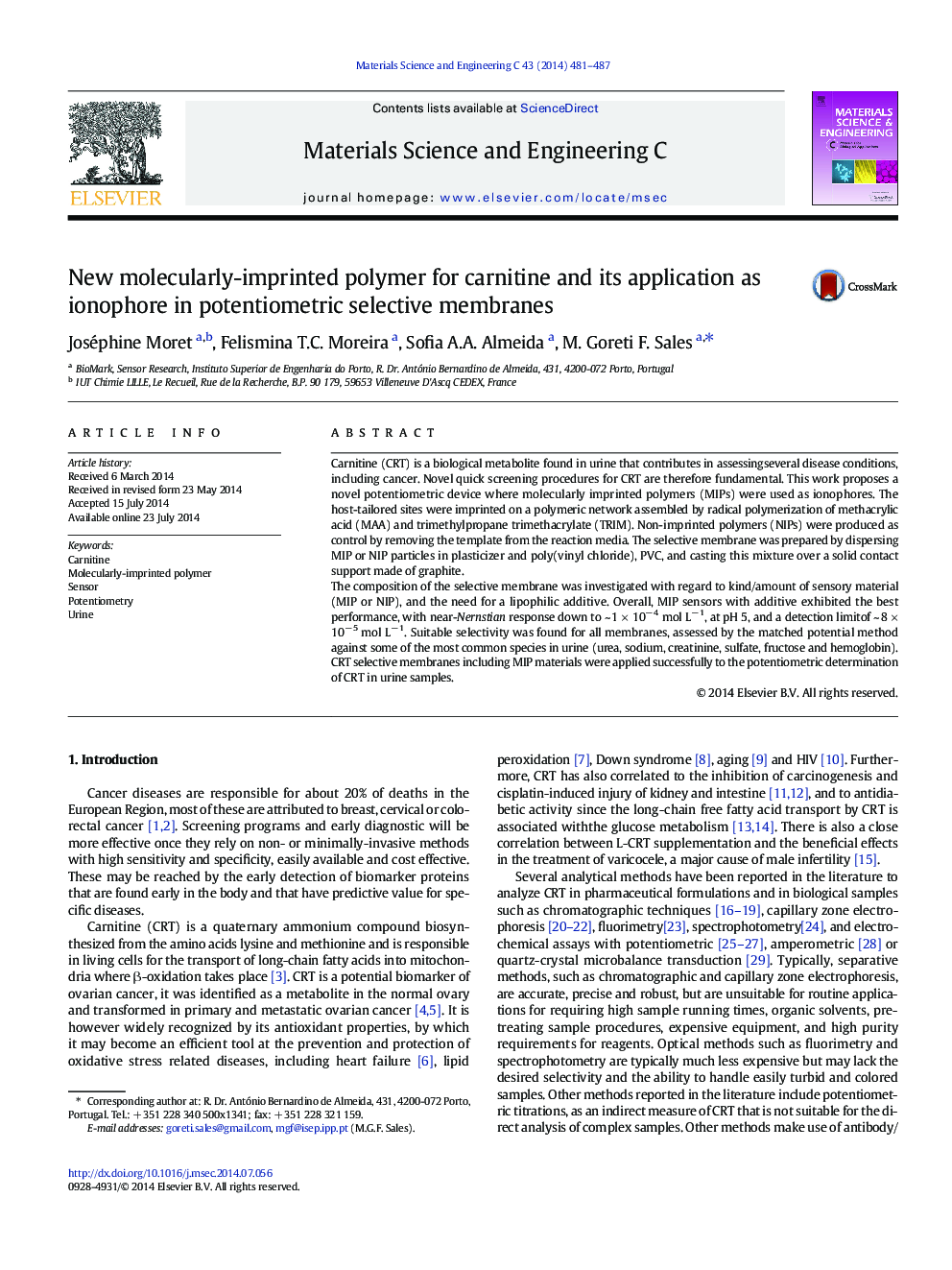| Article ID | Journal | Published Year | Pages | File Type |
|---|---|---|---|---|
| 7869942 | Materials Science and Engineering: C | 2014 | 7 Pages |
Abstract
The composition of the selective membrane was investigated with regard to kind/amount of sensory material (MIP or NIP), and the need for a lipophilic additive. Overall, MIP sensors with additive exhibited the best performance, with near-Nernstian response down to ~ 1 Ã 10â 4 mol Lâ 1, at pH 5, and a detection limitof ~ 8 Ã 10â 5 mol Lâ 1. Suitable selectivity was found for all membranes, assessed by the matched potential method against some of the most common species in urine (urea, sodium, creatinine, sulfate, fructose and hemoglobin). CRT selective membranes including MIP materials were applied successfully to the potentiometric determination of CRT in urine samples.
Related Topics
Physical Sciences and Engineering
Materials Science
Biomaterials
Authors
Joséphine Moret, Felismina T.C. Moreira, Sofia A.A. Almeida, M. Goreti F. Sales,
